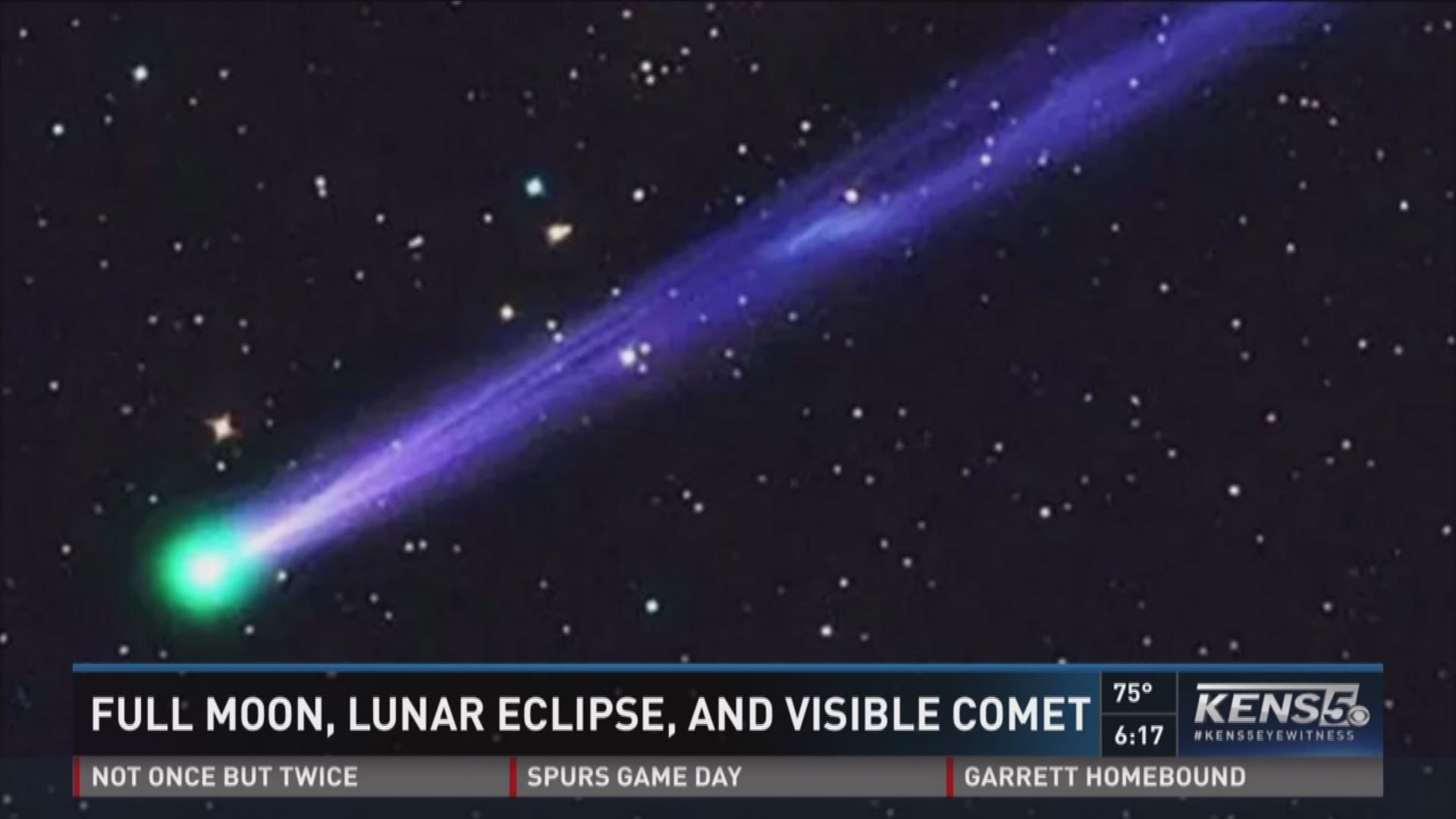It's being called a celestial triple threat: A full moon, lunar eclipse, and a visible comet all happening in the same night.
The first part is the February full moon called the "snow moon." It is named after what's typically a cold and snowy month.
Then there's part two, the lunar eclipse. Not a total eclipse, but a penumbral eclipse.
"The moon gets partially eclipsed by the Earth's shadow. As astronomers like to call it, it's the unsatisfying eclipse," said Michelle Risse, the planetarium coordinator at the Scobee Planetarium.
Too bad for astronomers but about a third of eclipses happen to be penumbral.
Friday night is also the night of the comet. Risse said,
"It's named after the three astronomers who discovered it: Honda, Mrkos, and Pajdušáková," Risse said.
Or "45P" for short. It’s speeding away from the sun and will be at its closest point to Earth on Friday night.
"This particular comet is 7 million miles away from Earth," Risse noted.
As long as there is some clear sky, you'll see the moon rise in the ENE sky at 6:17 p.m. The exact moment of the eclipse will happen 26 minutes later at 6:43 p.m.
If you're looking for the comet, you'll have to stay up late and look to the east at about 3 a.m., where it will be visible in the constellation Hercules. It'll have a bright-blue green "head," but to see it, you'll need binoculars or a telescope." Risse said,
"It would look like a fuzzy patch in the sky, but you really couldn't quite see it [with the naked eye]," Risse said.
But with a closer look it sure will look pretty.
"It's far enough away to where we can enjoy its splendor but not have to panic about it," Risse said.
If you do want to take a gander at the moon, the comet, or any celestial event, the best place to do that is at least 10 to 15 miles away from city lights.

